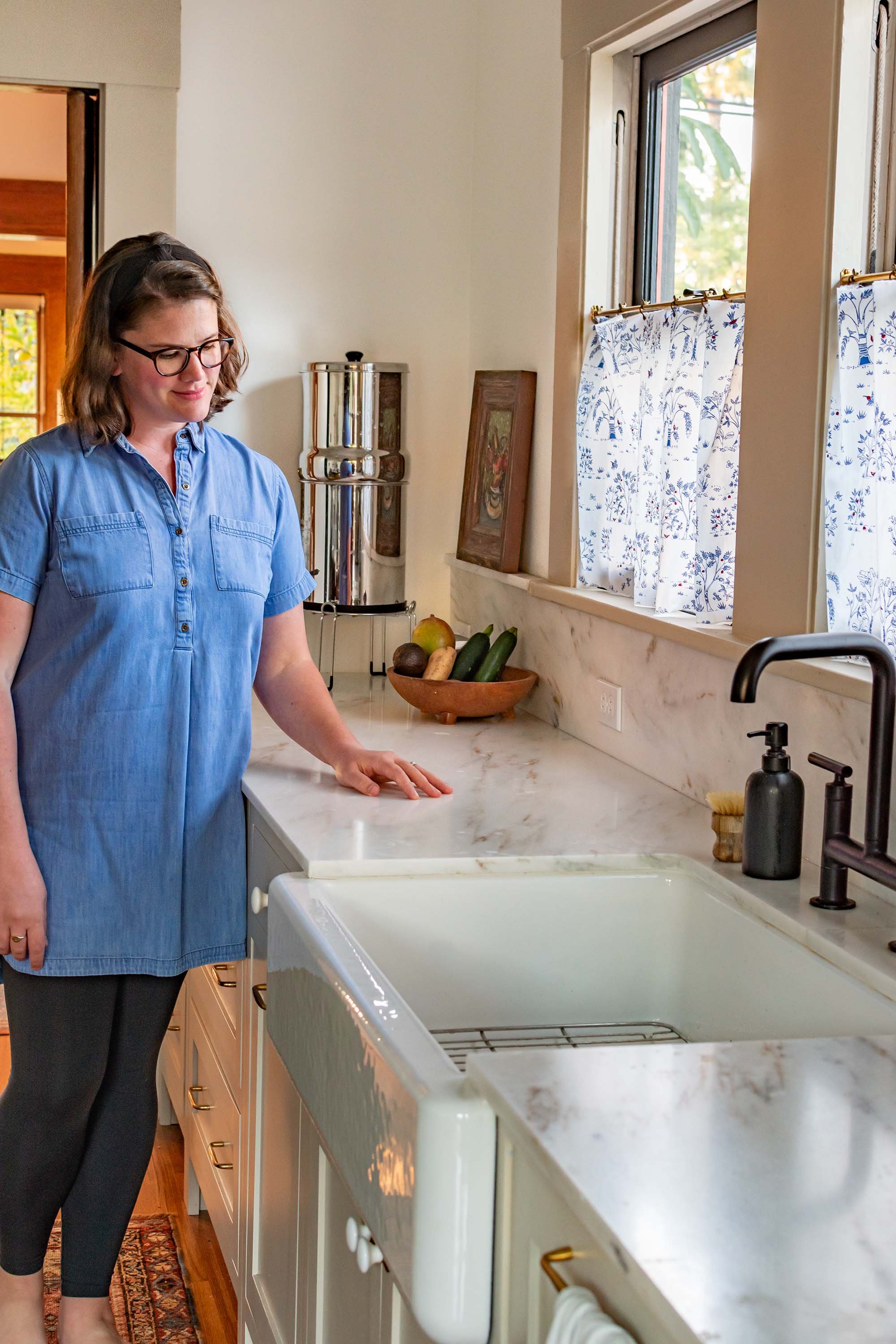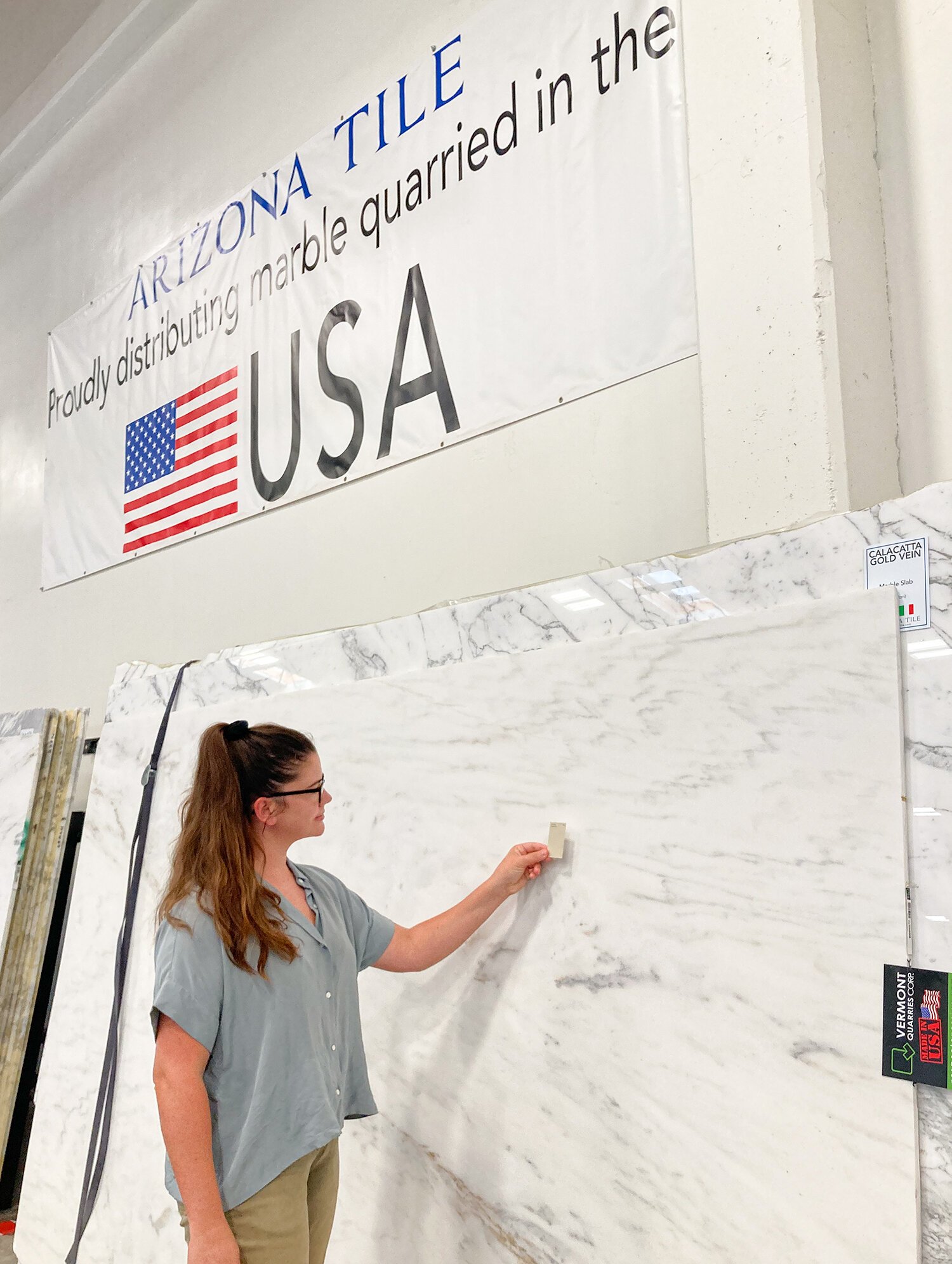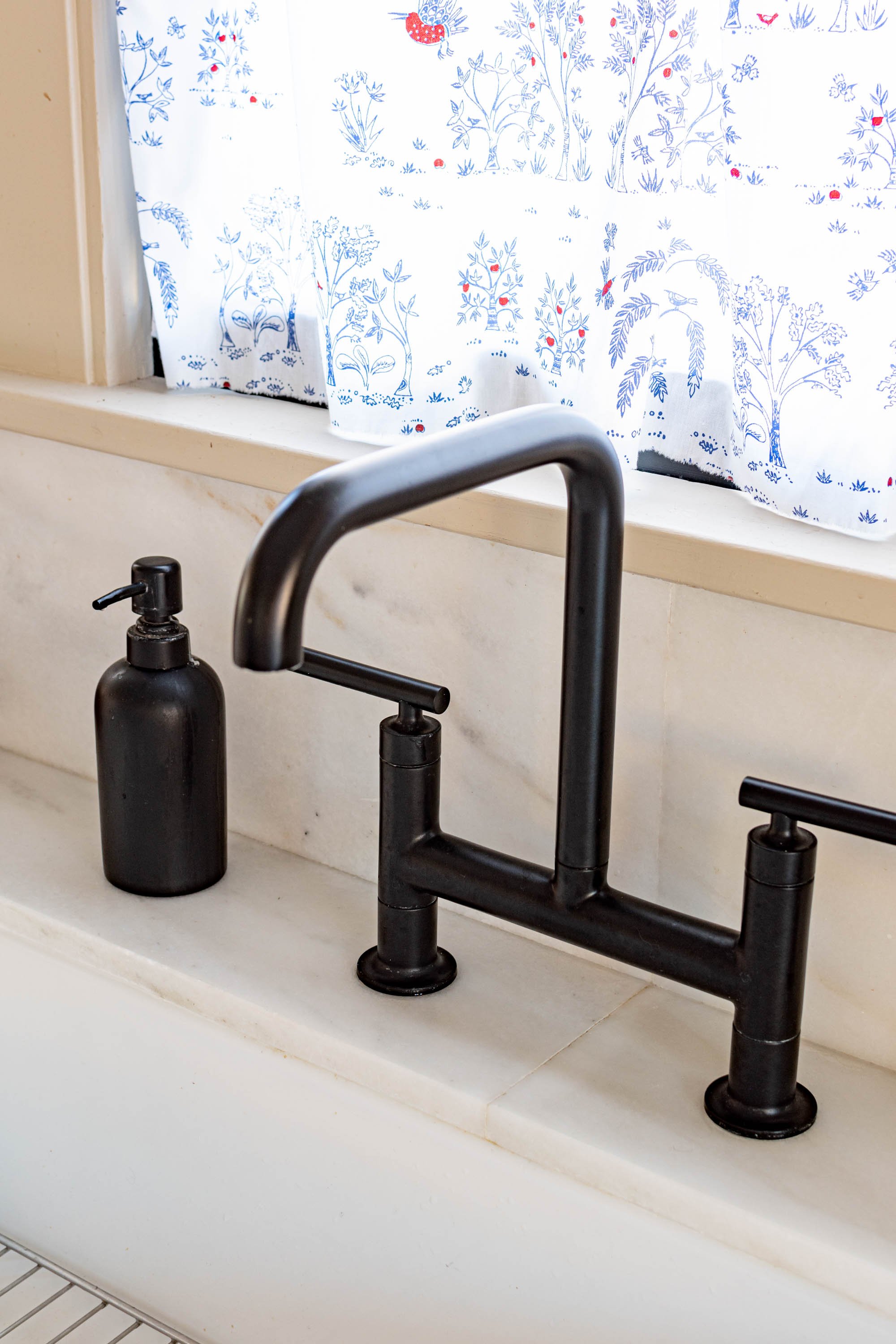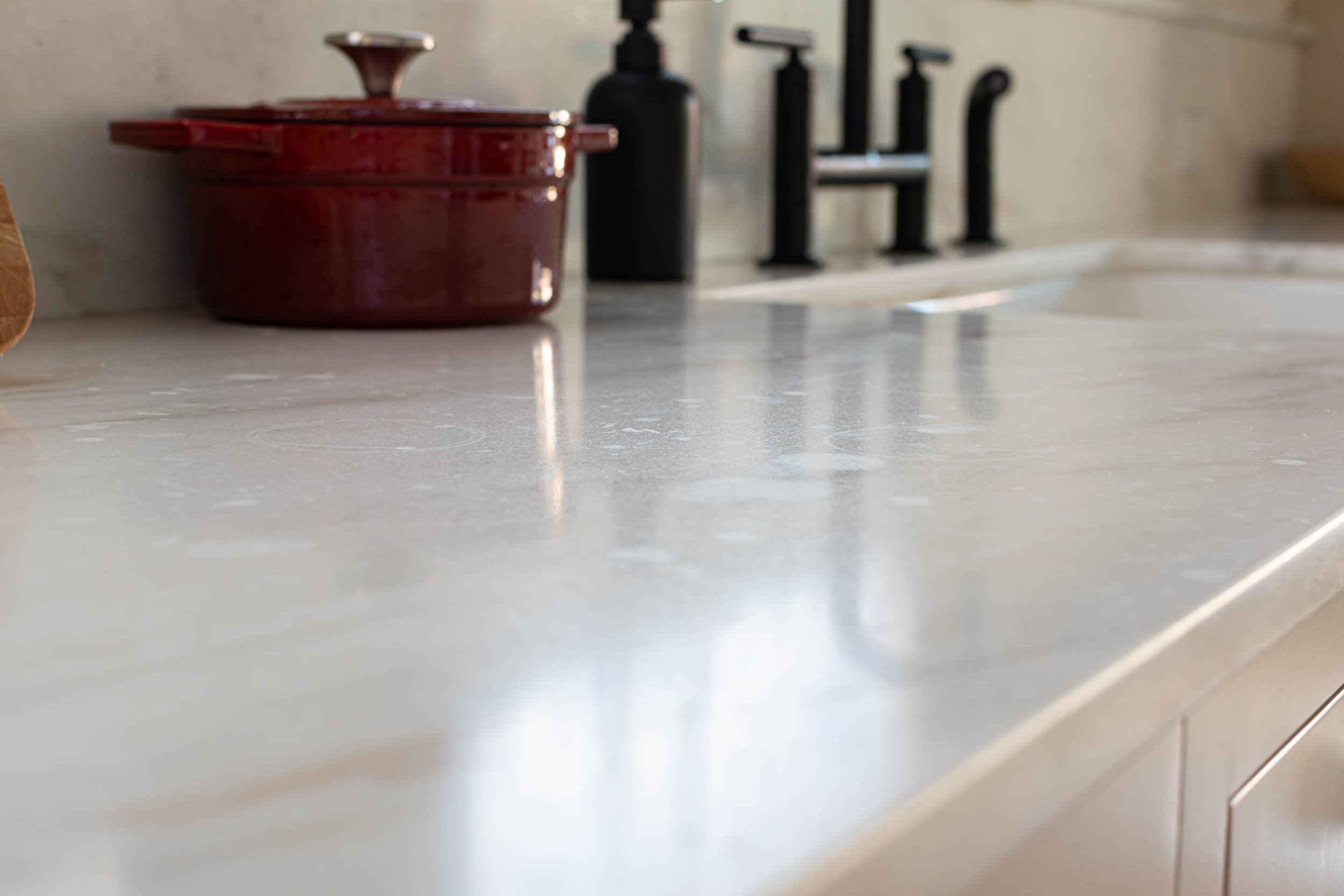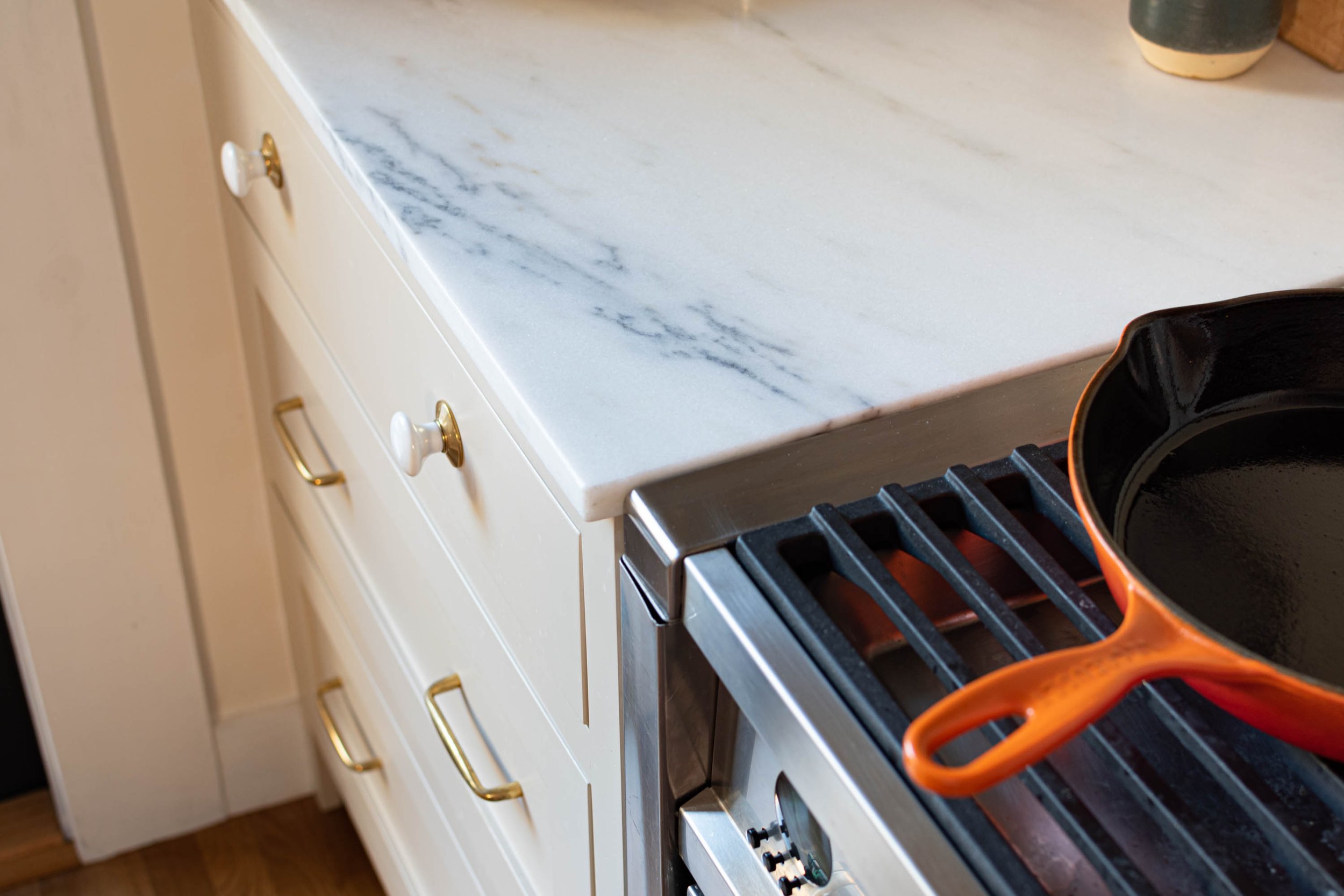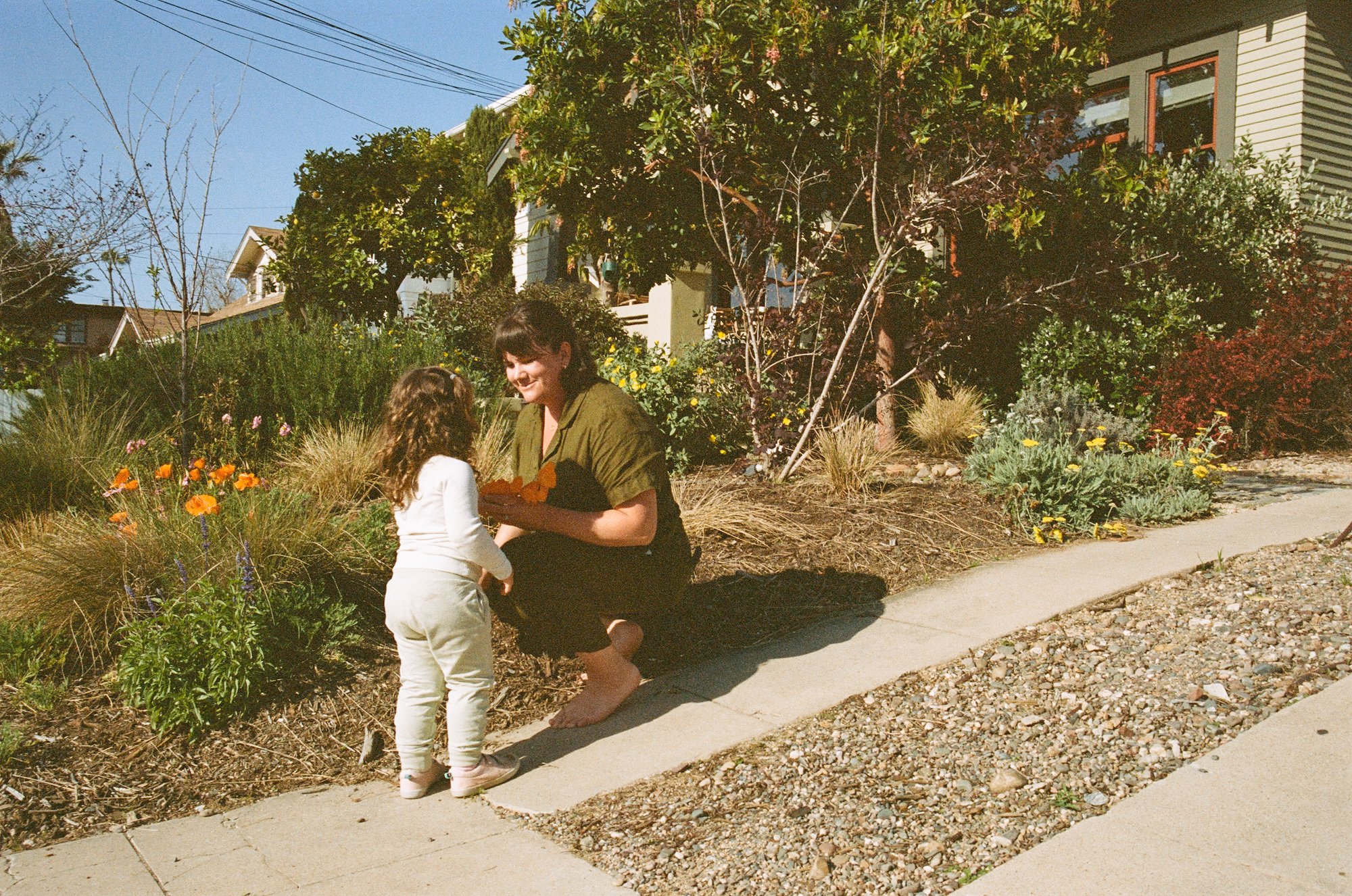A Year with Marble Countertops in the Kitchen
/Hi! I’m Ashley, I’m a type-A homebody fixing up my historic home in San Diego, CA. My old house renovation is chronicled on my blog The Gold Hive. I’ve been slowly renovating my kitchen to create a new space fit for a modern family in an old home. While it’s taken me years to decide on the layout and cabinetry color, there was always one thing that was certain. Marble countertops.
It’s been a year since installing our dream marble counters. So, I’m reflecting on the experience of living with the natural stone. We’ve had many coffee spills, oil splatters, and citrus squeezes, so how is it holding up? I’ll tell ya!
First, let’s back up and go over why I chose marble. I elaborate on my entire thought process in this blog post, but in summary:
Our historic house deserved a classic material in keeping with its old age.
We wanted a work surface that had the visual movement and the physical texture of a natural stone rather than a man-made material
We required a countertop that was ethically sourced, so we found a quarry that prioritizes worker safety, land reclamation, and required little transportation (learn more here)
We desired a material that would be timeless rather than trendy
After browsing hundreds of stone slabs, I decided on Imperial Danby for its warm coloring, a honed finish for its ability to hide etches, and Vermont Quarries for the ethical sourcing of the stone. It couldn’t be a more perfect fit for our goals! I share more about the quarry and even link to an incredible tour of their facility here.
I went with a 2cm thick stone and didn’t add any thickness with an apron. I also added a backsplash with curvy cutouts and a small shelf to create something extra special. I adore the unique shapes yet the simplicity and timelessness of the marble. You can learn more about the design process here.
Once the slabs were installed, I immediately got to sealing the marble to prevent stains. I outlined the entire DIY process here.
Now, this is where marble gets a bad rap. Stains! Marble is indeed a porous material so it can take in penetrating liquids and stain. Think red wine, marinara sauce, coffee, turmeric. These things can indeed leave a serious mark on natural stones. But they can be prevented (and even reversed!)
So how have my countertops done with stains? I kid you not, they haven’t stained at all. I mean it! I worried about staining when a coffee ring went un-wiped for 12 hours, when the marinara sauce spilled, and when the berry kombucha bottle exploded. But not a single one of those incidents left a stain.
This is all thanks to the top-notch sealer that I used. I’m constantly impressed by the lack of stains!
The only discoloration in the stone is by the sink at the seam where the fabricators joined the two slabs. Water tends to pool in this high-use area and the seam started to yellow. However, this discoloration is easily reversed with a DIY poultice solution of baking soda and water (or hydrogen peroxide). See how to apply a poultice here.
Let’s take a brief intermission to admire the stone. Holy cow! I can’t get over the veining in this particular slab. The browns and greys are so lovely and add such warmth and character.
While stains are basically nonexistent in our countertops, there is a significant amount of etching. Etching occurs when acids like lemon juice dull the surface of the stone. These blemishes are only noticeable from certain angles as light hits the stone. See the photo above where the marble looks perfectly pristine, then compare it to the photo below.
That’s the same slab from a different angle. Do you see those faint marks near the sink? Those are etch marks. They are super common and nearly impossible blemishes to avoid. Etches bother some people, but I prefer to look at them as a natural patina on a natural stone. If folks love marble but don’t like etches, I recommend getting a honed finish rather than polished as the matte finish hides the etches best. And, for those really afraid of etches, there’s good news - it can be reversed! I’ll show you below.
First, here are more photos of the etches in my countertops.
They’re subtle, right?
This section of countertops takes the biggest beating. We do all of our meal prep here, pile dirty dishes here, and clean baby bottles here. This slab of counters has the most etches, but you only see them when the lighting hits them just right. Notice how they disappear in the shadows?
I’ve come to embrace the etches as the character of the stone. They demonstrate that our kitchen is a place of activity rather than an unused showroom. They are reminders of meals made and shared in our home. They’re gentle marks of history.
But, I understand that even the most sentimental person may not want to see etches in their precious counters. So the good news is the etches can be removed!
The etches disappeared with a couple of minutes of rubbing an etch remover product into the dulled mark. It’s a truly magical transformation.
I used the etch remover last year when I had a hard time seeing my freshly installed marble get its first blemish. But since then, I’ve let the etches pile up. Maybe one day I’ll buff the entire counter with the etch remover to start fresh. But more likely, I’ll let the stone naturally age and patina with wear.
Another worry folks have is staining from cooking oil by the stove. But frankly, I forgot all about this concern until I sat down to write this post. There are no stains or marks from stovetop cooking! Sure, we get some oil splatter on the backsplash, but it wipes right up.
That’s about it!
We used to be really sensitive around our counters, but now we don’t treat them so delicately. Sure, we try not to squeeze lemons directly onto the stone, we wipe up spills, and we’d never cut directly on them. But we don’t baby them beyond that. We simply keep them clean with a plant-based acid-free cleaner or dish soap and water.
So, would we install marble counters again? Absolutely! We love them and can’t imagine any other work surface material. I’ll happily be rolling out pie dough on this marble for many many more years.

